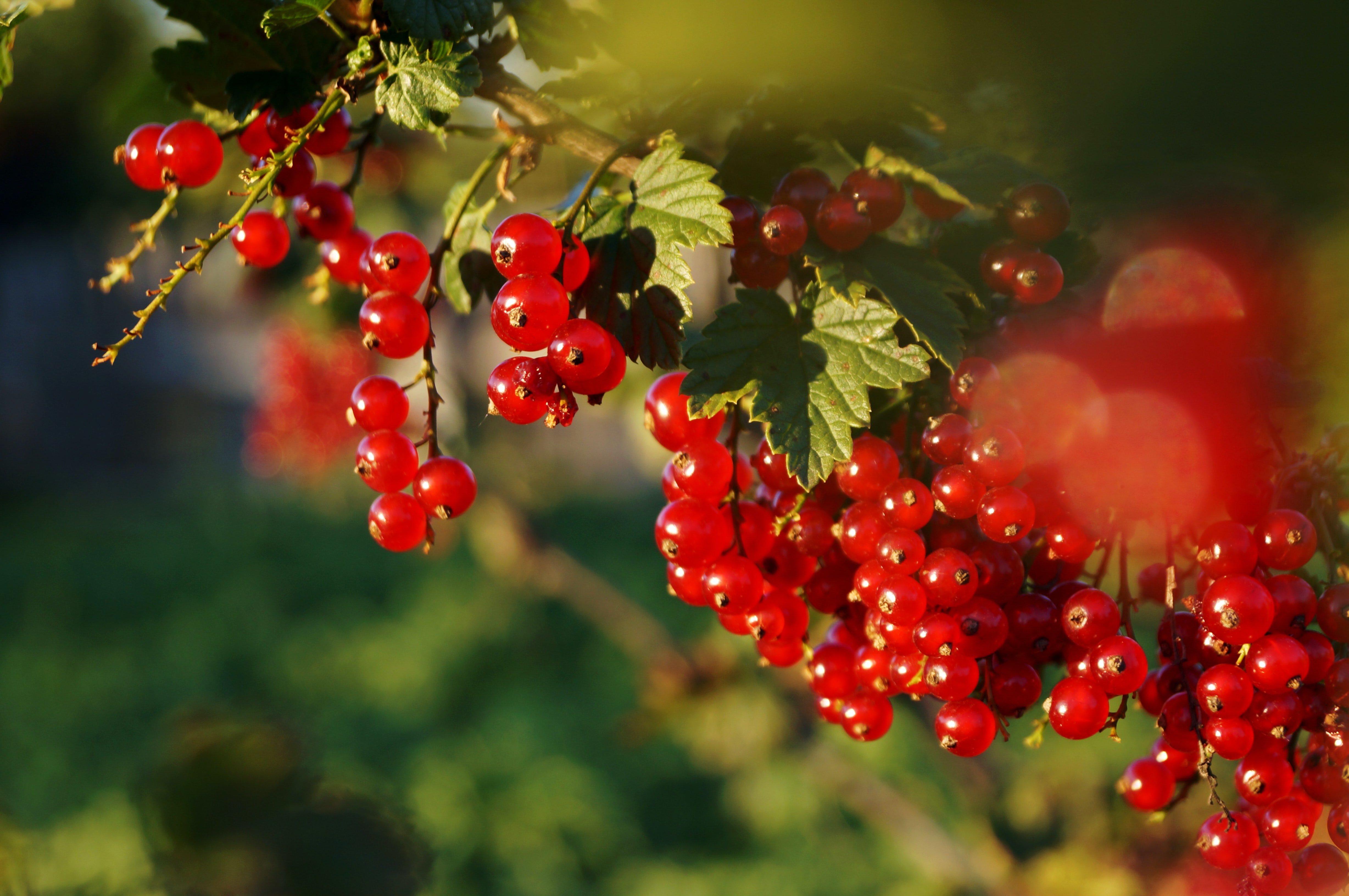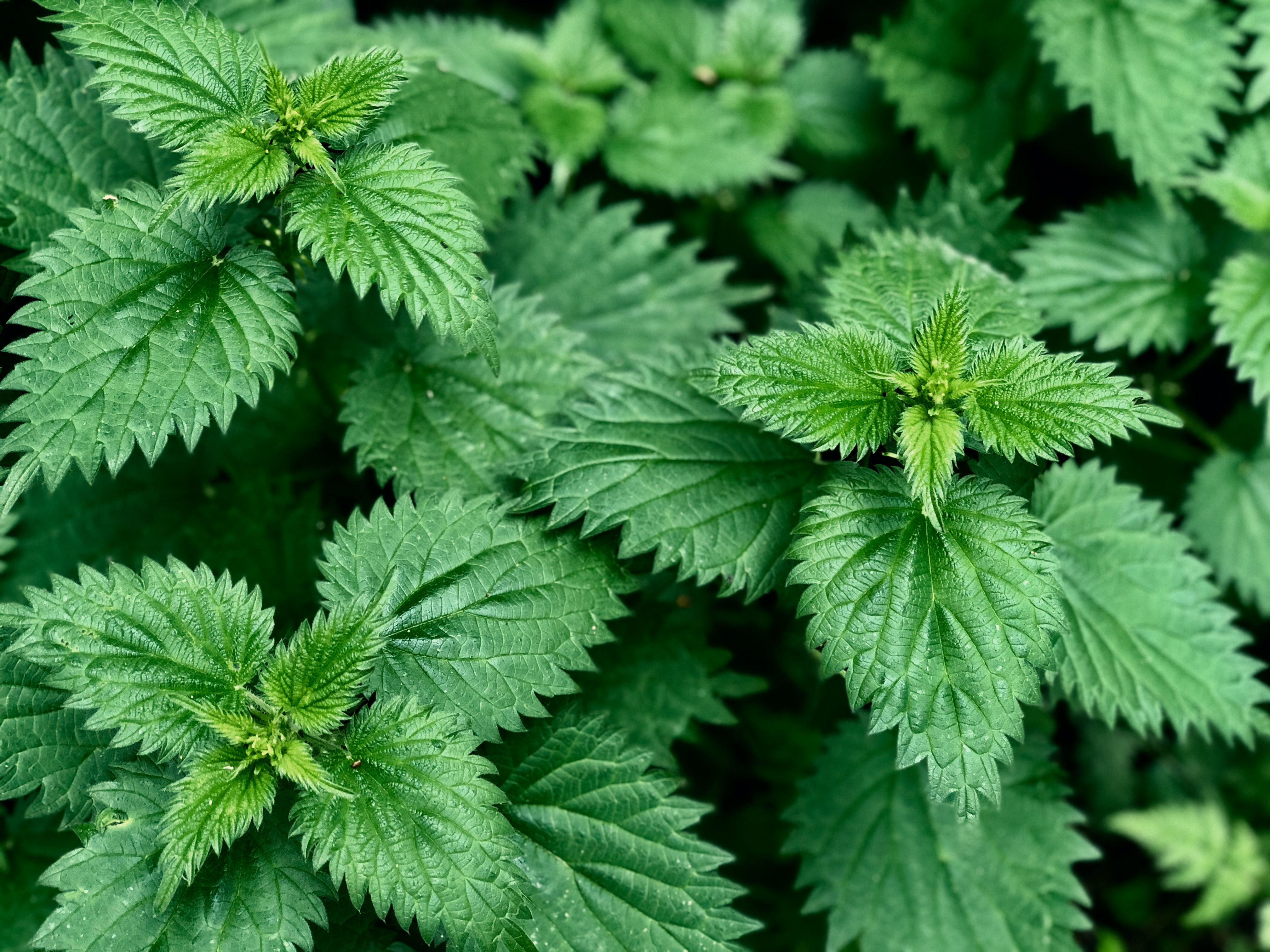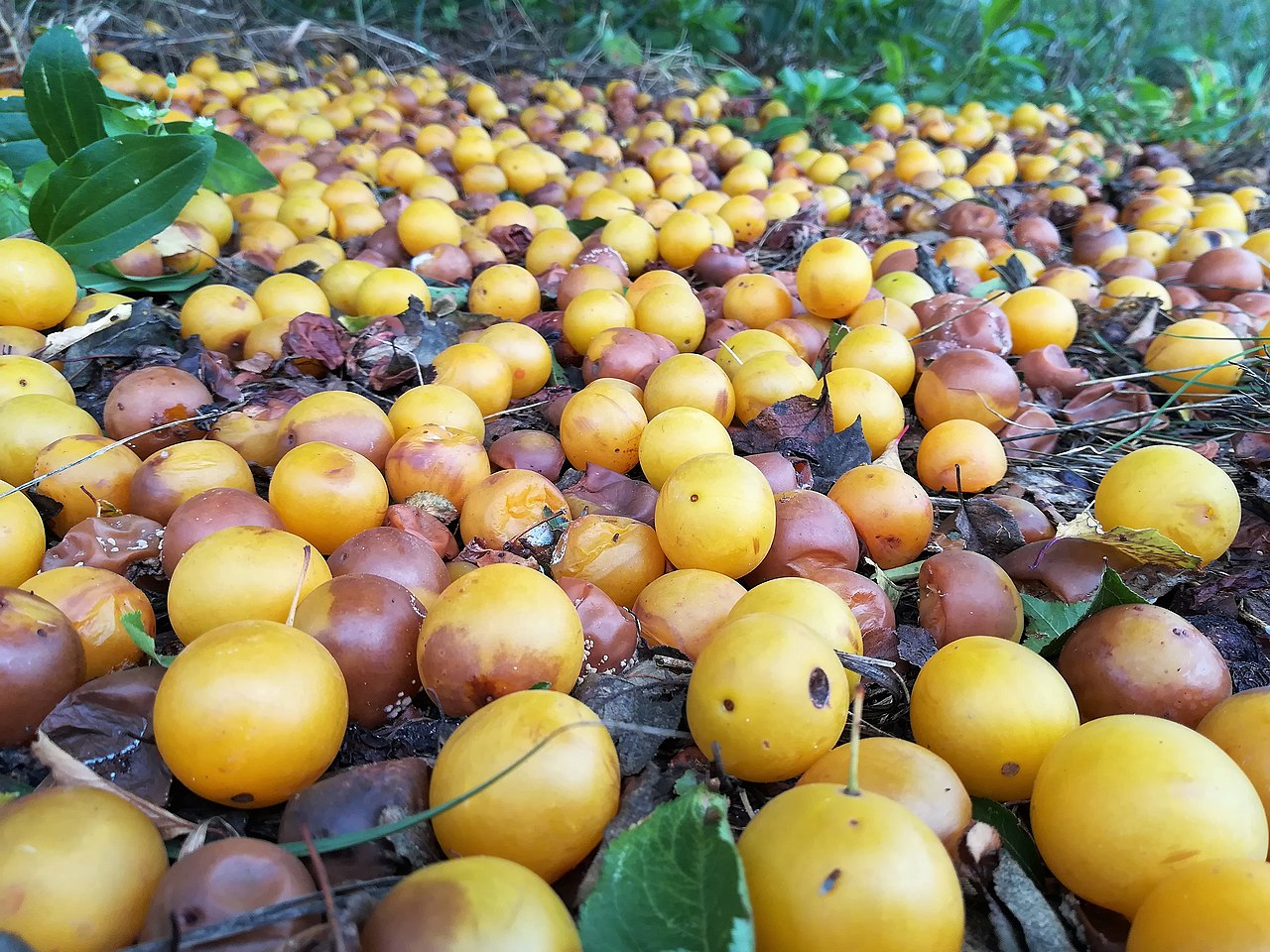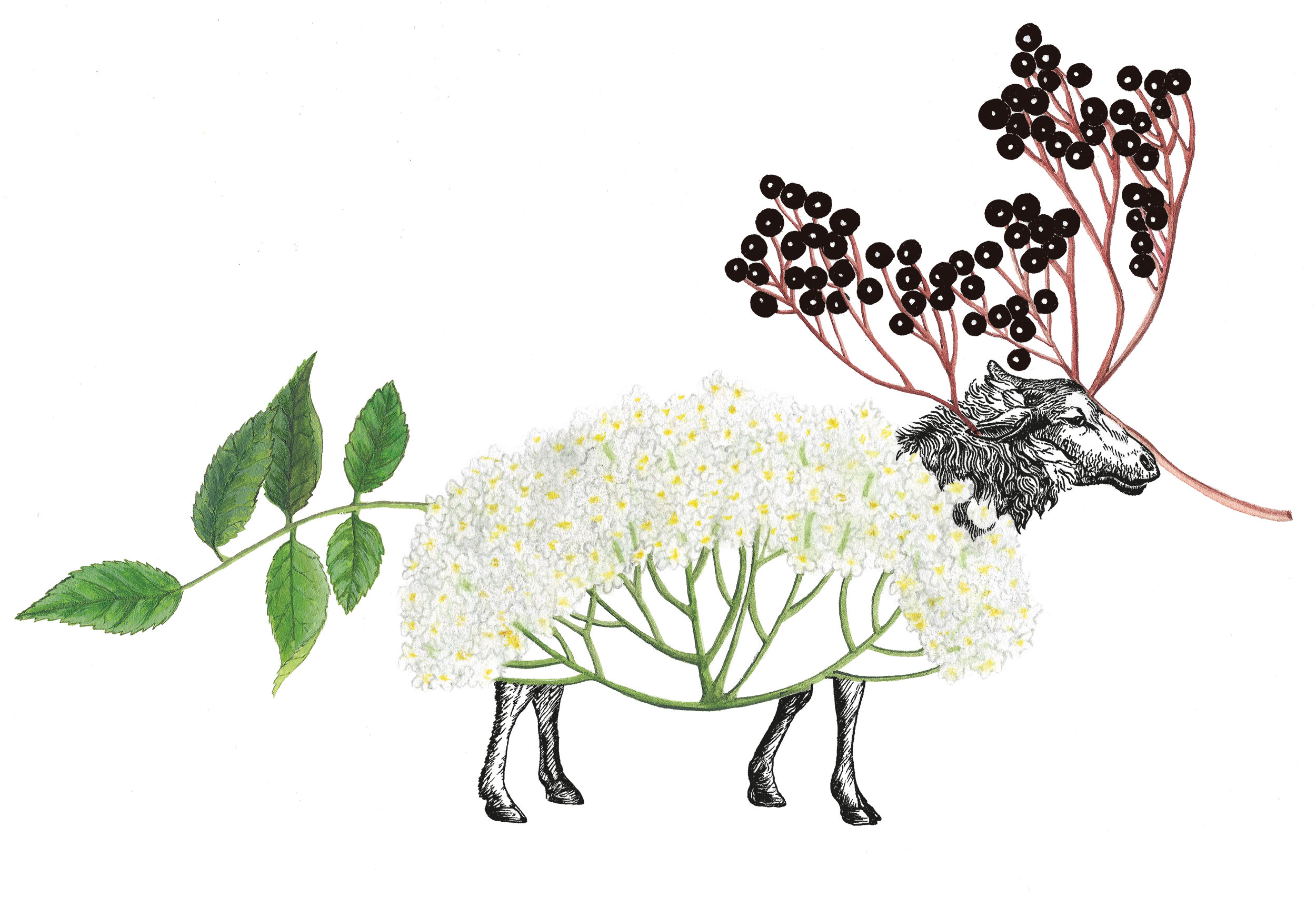
In the summer, it’s difficult to decide which fruits to gorge on. When you’re as indecisive as I am, any kind of abundance becomes torture. After the juicy June strawberries, nature bestows us with more and more succulent crops – so sweet you can almost taste the sun that made them grow.
I buy a punnet of raspberries at the market every day, but it’s always half-full by the time I get home. I eat such irrational amounts of cherries that I expect to become one myself soon enough. Moreover, I always buy more peaches than I need, and I leave them on the windowsill where their velvet skin softens and creases, slowly producing the sticky syrup that heralds the sweet pleasures of summer.
However, when the cold sets in and pumpkins drape the market stalls in various shades of orange, guilt surfaces: every year, in the frenzy of culinary decision-making, I tend to forget about the berries that are generally ravished less often, such as currants, gooseberries and wild strawberries. They are Poland’s true, albeit wild, national treasure.
If we dive back into the past or take a look at contemporary tastes, currant appears to be one of the most popular choices among berries. It loves to grow uncontrolled, on its own terms. Its rampant opulence actually inspired my very first culinary throes. My brother and I used to pick red- and blackcurrant berries straight from the bushes – they seemed terrifyingly large and prickly at the time – then we crushed them and pressed them through a sieve to get rid of unwanted surprises. I would brighten the scarlet or tar-coloured juice with buttermilk and sweeten it all with large globs of lime honey to alleviate the mouth-twisting acidity of the berries. The whole process required some effort, but the summer beverage market was dominated by my friends who offered nothing but lemonade, which was decidedly less attractive than my smoothie prototype. When I was a child, I could only appreciate the superior taste of my drink, without realizing how nutritious currants actually are. They contain considerable amounts of fibre, mineral elements, B vitamins and astonishingly high concentrations of vitamin C – 100 grams of currants offers more than twice the daily recommended amount! Nowadays, it should also be emphasized that that the berries have anti-bacterial, anti-viral and fungicidal properties.
But let’s get back to flavour. If I started selling juice today, I wouldn’t hesitate to experiment with the musky and herbal undertones that enrich the flavour of these sour berries. In fact, they are a big fan of vivid company – just close your eyes and try to remember that fabulous red wine with a bouquet of currant and dark chocolate, or currant and freshly-roasted coffee, which brings to mind the most decadent dessert of the world.
Since my culinary skills have significantly improved in the last 20 years, today I’d choose to serve handmade currant ice cream instead of smoothies. I’d make it from buttermilk and honey, with juniper and crushed almonds. Or with coffee and caramelized hazelnuts. Nuts always do well with currant berries. Take peanut butter and jelly sandwiches. Traditionally, you’d need over-sweetened grape or strawberry jam, but anyone who has tried currant marmalade instead can testify to the fact that it tastes so much better, because it breaks through the ranks of the fatty, salty peanut flavour.
The currant family also includes gooseberries – or, to be more accurate, currant berries are part of the gooseberry family. Unfortunately, I don’t have a working relation with gooseberries. As a child, I was constantly urged to eat them – apparently they’re good for the eyes – and I started avoiding them like the plague. Had I eaten more of them, I may not have needed glasses later.
I’m catching up with my gooseberry know-how as I serve myself another piece of thyme almond cake, full of half-submerged pieces of fruit that sparkle like small emeralds. I adore this tangy pleasure, to the point where I braise the gooseberries with phacelia honey beforehand, because it highlights the acidity of the berries and the herbal flavour of thyme. Serving the cake with a glob of heavy sour cream is a must. It isn’t widely available in Poland, but it’s easy to make at home – just mix some whipping cream (36% fat content) with a bit of kefir and leave it on the countertop to ferment during the night, till it thickens with flair. An interesting way of using gooseberry is to add it to bigos, a kind of Slavic meat stew. Stanisław Czerniecki (author of the first Polish cookbook, Compendium ferculorum) cites a few different recipes for this dish, all of them without sauerkraut: bigos with bone marrow, capon or carp. In those times, bigos was all meat, soured with lemon, lime, vinegar or currant. The popularization of cabbage and the subsequent rotation of souring ingredients helped lower the costs of preparing the dish while retaining its acidic taste. My 21st-century bigos doesn’t include any meat at all. Instead, it’s made with green lentils, a whole battery of herbs, caramelised champignons and dried Polish plums from Sechna. It tastes even better with a spoonful or two of gooseberry marmalade, which suits the sweet and sour flavour of bigos.
Wild strawberries, the slightly anaemic forerunners of the common strawberry, disappear in the shadow of their younger sisters’ curves. However, their taste makes me think of the most amazing summer love. Elusive, sweet and passionate. It also reminds me of walking in the forest, and it does require a lot of walking, since wild strawberries are hardly available in stores. It’s a shame – they have a whole array of nutritional and medical properties that are commonly used in popular medicine. Mediaeval physicians used them to treat fevers, contemporary doctors recommend eating them for healthy gums and low cholesterol. But I don’t think anyone needs any convincing to eat these berries. The best patisseries sell snow-white meringues and birch-cream pies topped with the ruby-like fruits – so chic they could be the pride and glory of Louis XIV’s table (he adored them, and to him we owe the creation of what we know as the strawberry). Wild strawberries work fantastically with iced rosé cocktails, the perfect antidote to July heatwaves. However, the best solution is to simply pack some dark chocolate and go hunting for wild strawberries in the woods. Once your jar is full, just find a comfortable place to sit, preferably in the soothing shadow of a tree, and unwrap your chocolate – it should be melted by then. Dip the freshly-picked wild strawberries in the intense cocoa paste that stains your fingers and eat as many as you wish. Later on, you won’t feel like saying I’ve had too few.

Currant ice cream with buttermilk, honey, juniper and crushed almonds
1/2 cup (120ml) buttermilk
1 tsp juniper seeds, ground in a mortar
500g redcurrant or blackcurrant berries
1/3 cup (110ml) honey
1/4 tsp salt
1/2 cup (120ml) heavy whipping cream (36% fat content)
Roasted, crushed almonds (for serving)
Add the juniper seeds to the buttermilk, bring to the boil and set aside to cool. Pass the mix through a sieve to get rid of the seeds.
Wash the currant berries in running water. Remove the peduncles. Put the fruits in a small pot, add two or three tablespoons of water. Heat until they release their juices and boil for around eight minutes. Press through a sieve twice to discard the pulp. Mix the berries with the aromatized buttermilk and cool it down in the fridge, then mix with the honey and salt.
Whip the cream to a thick froth. Gently add it to the buttermilk mix and pour everything into an ice cream box. Put it into the freezer. Mix the ice cream every 45 minutes during the first four hours of freezing to enhance fluffiness and avoid unappetizing ice crystals.
Take the ice cream out 15 minutes before serving, to let it soften a little. This way, it will be easier to scoop it out of the box. Serve with crushed almonds.
Translated from the Polish by Joanna Piechura










